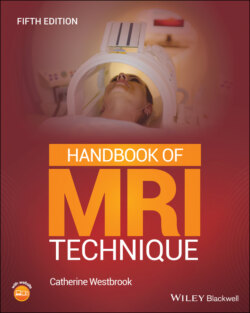Читать книгу Handbook of MRI Technique - Catherine Westbrook - Страница 35
DECISION STRATEGIES
ОглавлениеTo optimize image quality, data should have a high SNR and good spatial resolution and be acquired in a short scan time. This is usually impossible, however, as the factors that must be increased to improve SNR may have to be decreased to gain spatial resolution. An example of this is matrix selection. A coarse matrix is required to obtain large voxels and therefore a high SNR. However, a fine matrix with small voxels and low SNR is not only necessary to maintain good spatial resolution, but also increases the scan time as more phase encodings are performed. The MRI practitioner must decide which factor (either SNR, phase resolution or scan time) is the most important, optimize this and sacrifice the others. When discussing these issues in Part 2, the importance of good SNR over the other factors is emphasized. There is little point in having an image with good spatial resolution if the SNR is so poor that the image has no diagnostic value.
The selection of an appropriately sized and tuned coil is also important, together with the proton density of the area under examination. For example, when examining the chest, which has a low SNR, protocol parameters must optimize the SNR as much as possible and spatial resolution and scan time are sacrificed. The importance of limiting the scan time for patient toleration is also discussed in Part 2. If the scan time is lengthy, all patients eventually become uncomfortable and move. The resultant motion artefact degrades any image regardless of its SNR or spatial resolution characteristics. Therefore, it is important to minimize scan times to acceptable levels. If patients are in pain or uncooperative, this strategy is even more important.
